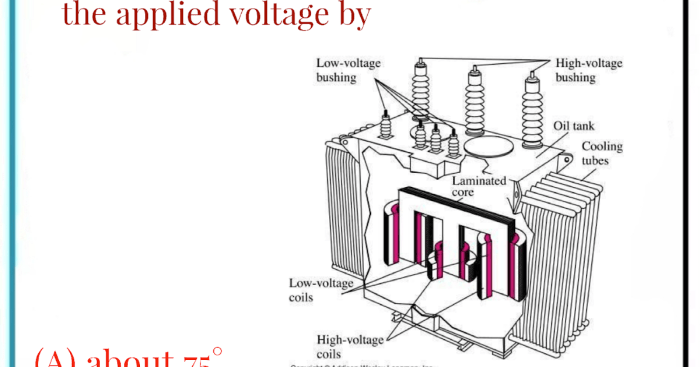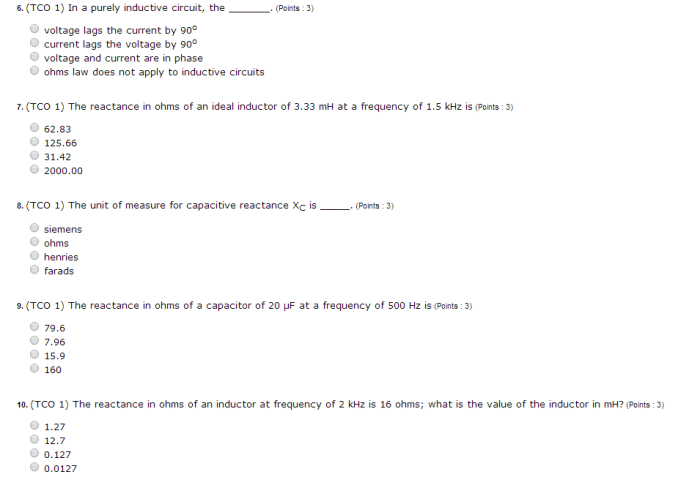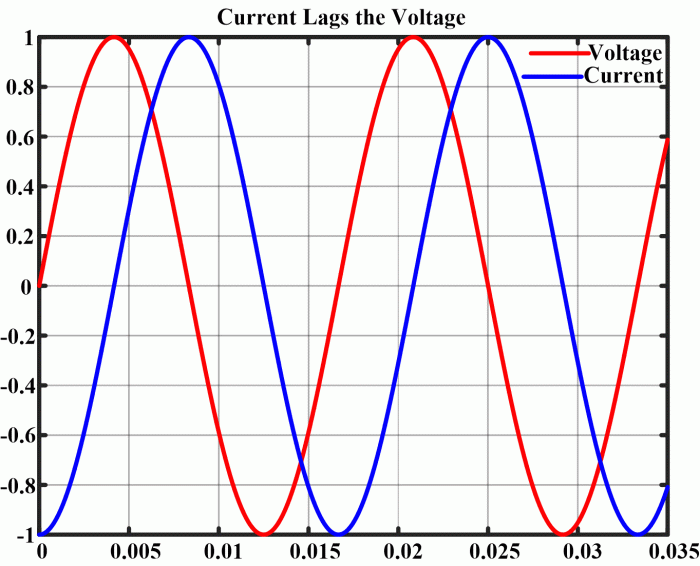The current lags the applied voltage in the circuit shown. – In the realm of electrical circuits, the concept of lagging voltage takes center stage, presenting a captivating phenomenon that unveils the intricate relationship between current and voltage. As we delve into the intricacies of the circuit shown, this discourse promises to unravel the mysteries of phase shift, impedance, resonance, and their profound implications in various applications.
This exploration commences with an overview of the circuit’s components and their functions, laying the foundation for understanding the dynamics at play. We will then embark on a journey to decipher the phase shift between voltage and current, unraveling the role of inductance in shaping this crucial aspect of the circuit’s behavior.
Circuit Analysis
In an alternating current (AC) circuit, the current lags behind the applied voltage due to the presence of inductive or capacitive elements in the circuit. This phenomenon is known as phase shift.
Phase Shift

The phase shift between voltage and current in an AC circuit is caused by the inductance of the inductor. Inductance opposes the change in current flow, causing the current to lag behind the voltage. The phase shift is measured in degrees, with a phase shift of 90° indicating that the current is lagging the voltage by a quarter of a cycle.
Impedance

The impedance of an AC circuit is a measure of the opposition to the flow of current. It is calculated using the formula Z = √(R² + XL²), where R is the resistance, and XL is the inductive reactance. Impedance affects the flow of current in the circuit, with higher impedance resulting in lower current flow.
Resonance: The Current Lags The Applied Voltage In The Circuit Shown.

Resonance in an AC circuit occurs when the inductive reactance and capacitive reactance cancel each other out. This results in a sharp increase in current flow and a phase shift of 0°. Resonance can affect the performance of AC circuits, causing overvoltage or overcurrent conditions.
Applications

Understanding the lagging voltage is crucial in various applications, including:
- Power factor correction: Lagging voltage can reduce the power factor of a circuit, which can lead to increased energy consumption. Power factor correction techniques are used to minimize the phase shift and improve the power factor.
- Circuit design: The phase shift between voltage and current must be considered when designing AC circuits to ensure proper operation. For example, in audio amplifiers, the phase shift between the input and output signals can affect the sound quality.
Top FAQs
What is the significance of phase shift in AC circuits?
Phase shift plays a crucial role in AC circuits, affecting the timing relationship between voltage and current. It influences power factor, impedance, and resonance, which are essential considerations in circuit design and analysis.
How does inductance contribute to phase shift?
Inductance, represented by the symbol L, opposes changes in current flow. In an AC circuit, inductance introduces a phase shift between voltage and current, causing the current to lag behind the voltage.
What is the formula for calculating impedance in an AC circuit?
Impedance (Z) in an AC circuit is calculated using the formula Z = √(R² + XL²), where R is the resistance and XL is the inductive reactance. Impedance represents the total opposition to current flow in the circuit.